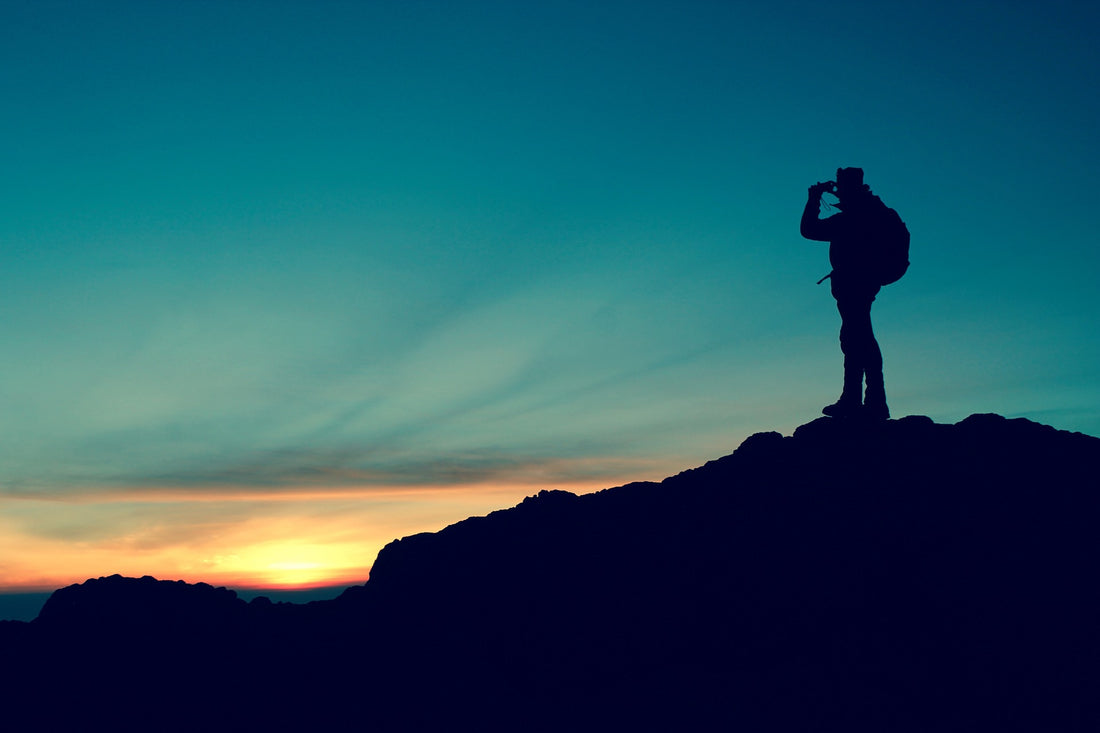Going for a hike on a warm summer day is a treat. However, blisters, chafing, and general sweaty discomfort can put a damper on the occasion. To have a pleasant summer hike, you want to stay comfortable and cool—which means wearing the right clothing. You certainly don’t have to spend thousands of dollars on hiking gear to enjoy nature, but a few key pieces can help to improve your experience in hot weather. Here’s what to wear hiking this summer!
Hiking Apparel Basics

To get the most out of your summer hiking experiences, consider wearing the following:
- Loose-fitting clothes. Tight clothing makes it hard for your skin to breathe, which can cause you to sweat more. Alternatively, loose-fitting garments, allow for some airflow between your skin and your clothes. This can help to keep you cooler and drier in the summer heat.
- Lightweight, synthetic materials. Stick with lightweight materials, and choose synthetics over cotton. Synthetic hiking clothes made with materials like polyester and nylon offer moisture-wicking properties that help you stay cool and dry. Cotton pieces, on the other hand, tend to hold on to your sweat, getting heavier as the day goes on. Also, wet cotton clothing can cause chafing, which is something that could make a long hike very uncomfortable.
- Consider long sleeves. Believe it or not, it can be beneficial to wear a long-sleeve shirt when hiking on a hot day. A quality hiking shirt made with lightweight synthetic materials will help to keep the sun from beating down on your skin while remaining light and cool.
- Shorts or Pants. Shorts can keep you cooler, but they’ll expose your legs to the sun. Hiking pants made with lightweight synthetics can keep you cool while protecting you from the sun. Look for pants that include open or mesh vents for improved airflow, and stick to light colors.
- Socks. If there is one part of your body you need to make sure is comfortable when hiking, it’s your feet. Stay away from cotton socks, as these can collect moisture and lead to blisters. Choose either wool or synthetic socks to protect your feet, and ensure a snug fit—too small or too loose can also cause blisters.
- Hat. A hat is a great way to keep the sun off your head and out of your eyes. Opt for a baseball cap or a wide-brim sun hat for even more protection.
- Light colors. Darker colors can absorb the heat from the sun, so choose light colors like white or khaki to stay cool when hiking in the summer.
Layering Can Help You Adapt

Weather conditions can change from day to day, and even within the course of the same day. This is especially true in the summer, when afternoon storms can pop up out of nowhere. Plus, many days may start off much cooler and gradually grow hotter throughout the day. In advance of your hike, be sure to check the weather forecast so you can customize your outfit accordingly. If your hike will last several hours, layering can help to ensure you are dressed appropriately for each stage of the day.
Other Hiking Essentials
As any experienced hiker can tell you, dressing properly for your trip is important, but it’s only one piece of the puzzle. You will also need to have a variety of other items with you to help you stay safe and comfortable. The following is not a complete list of gear to bring, but it is a good starting point as you pack for the day:
- Water. Staying hydrated is arguably your number one consideration on a summer hike. This is important no matter the weather, but especially when hiking on a hot day. Don’t count on natural water sources, even if they’re charted, as they could be dry or unsafe to drink.
- Food. Depending on the length of your hike, food is not nearly as important as water, but it’s a close second. Take more food than you think you will need, just in case you are out there for longer than planned. Trail mix and energy bars are a great source of calories for hiking.
- Sunscreen. Depending where you are hiking, you may be exposed to a lot of direct sunlight. Use sunscreen throughout the day to protect your skin. You’ll want to apply 15-30 minutes before your hike and reapply throughout the day according to the instructions on the bottle.
- Directional aids. Even if you will be on a well-marked trail, it’s a good idea to bring a navigational aid of some sort, in case you get lost. This could include a compass and a detailed map of the area or a GPS unit. Whatever you take, make sure you know how to use it properly before setting off.
- Bandana. A bandana can be worn to help keep the sun off your head or neck. If you soak it in water, it can also be a great way to cool off!
Smell Great On & Off the Trail

When laundry time comes around, you may notice that your hiking clothes still stink, even after washing. This is because most regular detergents are designed to treat cotton rather than synthetics, which are what your hiking clothes are most likely made from, especially if you follow the tips in this article! The good news is that there are specialized sports detergents that can help you get rid of the stink.
WIN Activewear Detergent is a leading activewear detergent that can help you keep your hiking clothes clean and smelling fresh. Keep a bottle of WIN in your laundry room to care for all of your activewear!

